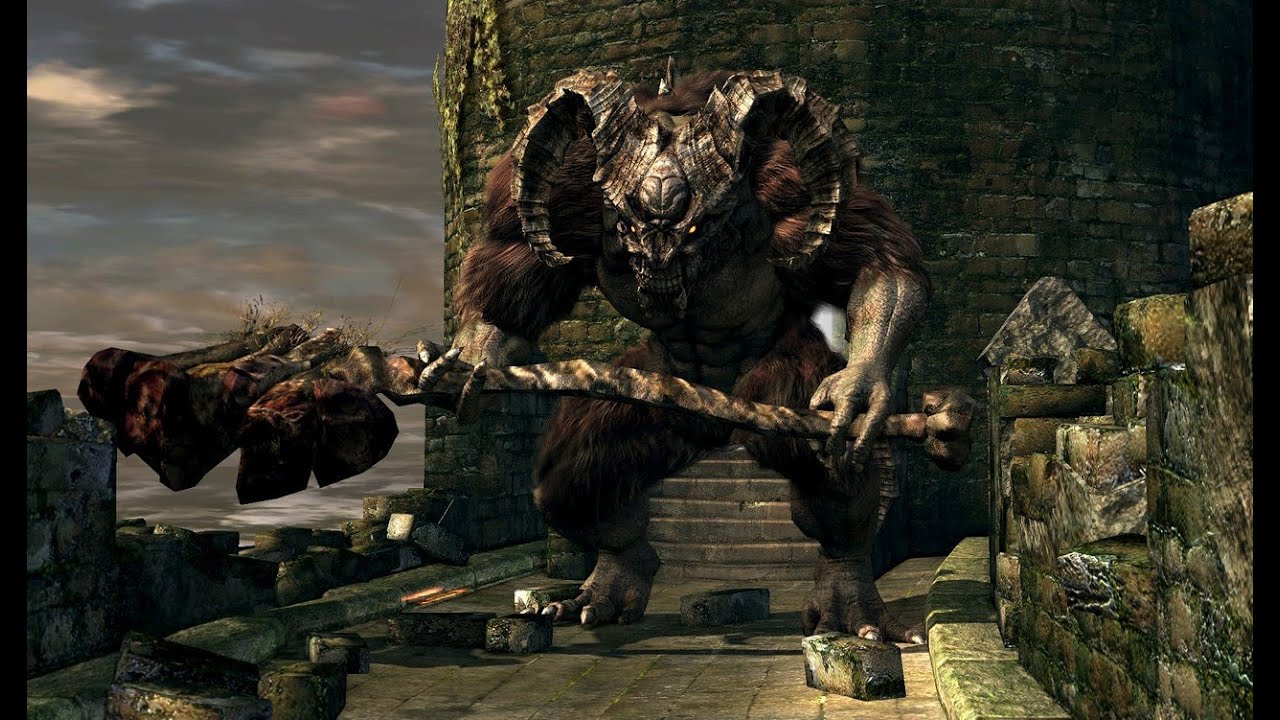Story Highlights
When I first played through the Dark Souls series, a thought always crept up in my mind. I couldn’t help but wonder how FromSoftware’s grueling dark fantasy series felt like it would be perfect for an open-world game. Flash forward to 2022, and after years of hype and anticipation, the gaming community was finally given the keys to Elden Ring.
With its release, FromSoft essentially answered the question I’ve always had. Elden Ring was a success in a multitude of ways. It featured a massive, varied open world that always had tons of interesting encounters. But despite it being a fun experiment, I think that it should not be the norm for the next Souls-type game fans get. So, without further ado, let me tell you why.
FromSoftware Excels At Linear Level Design
If you take a quick glance over FromSoftware’s previous titles it becomes clear the company is far more experienced with linear level design. Demon’s Souls, the Souls series, and even Bloodborne and Sekiro all have levels that are fairly linear. However, despite this, none of these games tend to feel formulaic or a chore to get through.
Going back to the original Dark Souls, the game essentially pioneered an entire genre. With Lies of P and Lords of the Fallen released recently, the impact left on the gaming industry by Dark Souls cannot be understated. Part of the reason why Dark Souls worked so well is thanks to the linear world design FromSoftware had.
Traversing the narrow streets of the Undead Burg, or making your way down into Blighttown are specific experiences that work as well as they do because they were created with a focus on linear traversal. Had the game been open-world, the careful journey that was designed for the player might not have worked as well. This sort of level design also works with the combat and difficulty of the Souls games.

Over time, these games have become much more lenient on the player. Elden Ring in particular allows for summons, But generally, the idea has been to tackle the levels through trial and error. Linear levels cement this idea as they limit your options more. You often have to tread on the same paths until you’re confident in your ability to take down the foes that stand in your way.
Interconnected Level Design Can Still Have A Ton Of Freedom
Just because Dark Souls 1 doesn’t let you wander off wherever you want from the get-go like Elden Ring does, doesn’t mean players lack agency. When beginning your journey in Dark Souls 1, you’ll most likely head into the Undead Burg. But once there, the game’s truly linear yet interconnected design shines through. There are tons of routes available to players that can help playthroughs feel fresh each time.
The interconnectedness of Dark Souls
byu/spicyginger123 indarksouls
Take, for example, the Taurus Demon. While most players might consider him to be the first main boss of the game you have to kill, the fact is that he’s entirely optional. Depending on how you make your route, you might not even come across the guy. There’s also the Master Key, a starting gift you can choose in Dark Souls 1. This makes the game even more connected. They key allows you to unlock additional routes in the game’s first half.

Players have an incredible amount of freedom in how they want to tackle DS1. This is something that still amazes me about the game’s design. Let’s also not forget the feeling of coming across an area, and realizing it leads back to a place that you’ve already been to. This has truly become a staple in the Souls series. And it only really works when you’ve got expertly crafted linear levels that flow into each other well.
Elden Ring Is At Its Best When Its Linear
Elden Ring’s open world definitely has its cool moments. I can’t forget stumbling upon those walking mausoleums. Or even opening that chest in Limgrave to get ported into Caelid. But there’s no denying, the game really is at its best when you reach areas like Stormveil Castle and Leyndell Royal Capital. The Legacy Dungeons are isolated from the open world and serve as their own sandboxes.
These areas are the closest Elden Ring gets to the linear level design of the original Souls games. However, in a lot of ways, they are even more improved this time around. Getting across these areas through trial and error is a feeling quite familiar to longtime Sousl fans. And the Legacy Dungeons being much more linear than the rest of the open world, there’s still a ton of choice involved in the paths you choose.
Only Good Parts are Legacy Dungeons and Some Bosses
by inEldenring
This just goes to show that future games don’t need to just be long corridors, even if FromSoftware goes for the more linear route. There are plenty of options for the developer to add player freedom, even while crafting more linear set pieces and dungeons, like the ones we got in Elden Ring.
Imagine if instead of having multiple isolated sandboxes that are populated with similar-ish caves and mines, FromSoftware put their efforts towards creating a bunch more Legacy Dungeons. We’d have gotten to see Raya Lucaria with as much depth as the Capital. Not to mention, the missing Legacy Dungeon in Caelid could’ve been added too.
In my opinion, it’d make the game a lot more interesting. Because the similar open world, while fun at first, tends to get very repetitive by the end. Having a more tightly knit series of Legacy Dungeons that lead one into the next, could’ve made Elden Ring a shorter experience. But ultimately, it’d be one that had a much more consistent amount of content.
Open World Does Not Always Work Well With FromSoftware’s Design
It’s got to be said that Elden Ring’s sandbox design doesn’t really work well with the more traditional elements. From navigation to quests, something about the game tends to feel off. Let’s take the many questlines in the game as an example. FromSoftware’s level design might be linear, but their storytelling is anything but.
Players will never be outright forced to interact with NPCs in the Souls games. So getting to know them and being involved in their storylines is a choice that you make on your own. There are no quest logs to keep track of your progress, or anything more than vague suggestions on how to continue progressing the quest you are currently on.
While this style of quest design worked with the Souls series, its cracks really start to show in Elden Ring. In Dark Souls, you are much more likely to come across NPCs. This is thanks to the linear design. Developers had an idea of the general route a player might take, even with the interconnectivity factored in. This allowed them to place important NPCs in places that couldn’t be missed by players. However, the same cannot be said for Elden Ring.
ER’s NPCs have a weird tendency to be standing in the middle of nowhere in the open world. This makes it incredibly difficult to locate them on your own. Let alone properly complete their quests. Most players resort to following a guide step-by-step to get even a single quest done.

That’s not to say this type of non-linear style of quests is bad per se. But it’s clear that it simply doesn’t jive well with the kind of game Elden Ring is. I mean, for a game that focuses on exploration and the open world, it does feel off that you can mess up certain questlines, simply because you killed a boss you weren’t supposed to.
Dark Souls Formula Needs To Be Perfected
One of the big reasons why I want FromSoftware to return to its linearly designed levels is to perfect the DS1 formula. Even more so than DS2 and DS3, Dark Souls 1 has a complex amount of interconnectivity. This is most apparently seen in the first half of the game, right until you clear Blighttown. Everything from the Undead Burg to Blighttown is so amazingly well-crafted.
And it’d be a shame if FromSoftware didn’t give that sort of design another go. Especially because the second half of Dark Souls 1 is severely lacking in this regard. Once you clear Anor Londo, the game becomes incredibly disjointed. Players can clear the remaining areas in whatever order they want. But none of them lead to each other. Plus, they tend to feel a bit tacked on.
It’s clear the developers ran into issues with scheduling. But can you imagine what the game could’ve looked like if the second half also delivered the same quality as the first? With as big of a studio as FromSoftware is now, I think it’s high time they give fans a fully interconnected Souls game. Especially one that calls back to the amazing level design of the first couple of areas of Dark Souls 1.
Why did future FromSoft games drop connected maps?
byu/silverbollocks indarksouls
Not only could this game build upon everything the studio has learned since then, but I think it has the potential to be just as revolutionary to the industry as Dark Souls 1 was at its time. There’s no saying what FromSoftware’s next game will be after Elden Ring. But I’m sure fans would definitely be on board with a spiritual successor that highlights Dark Souls 1’s interconnected yet linear-level design.
Thanks! Do share your feedback with us. ⚡
How can we make this post better? Your help would be appreciated. ✍



